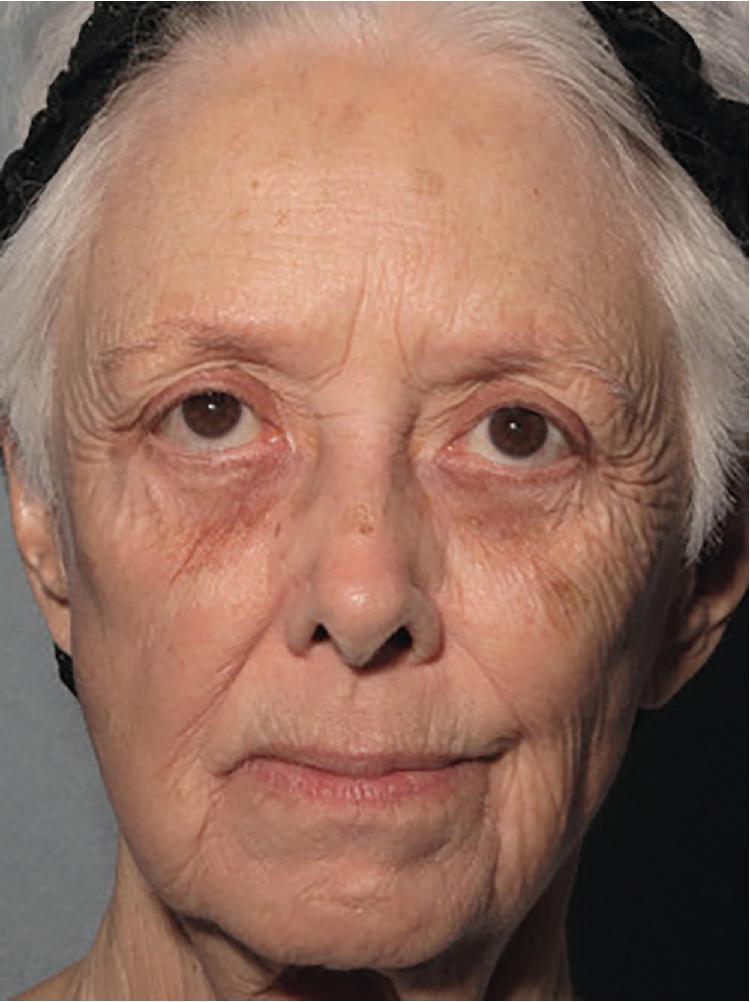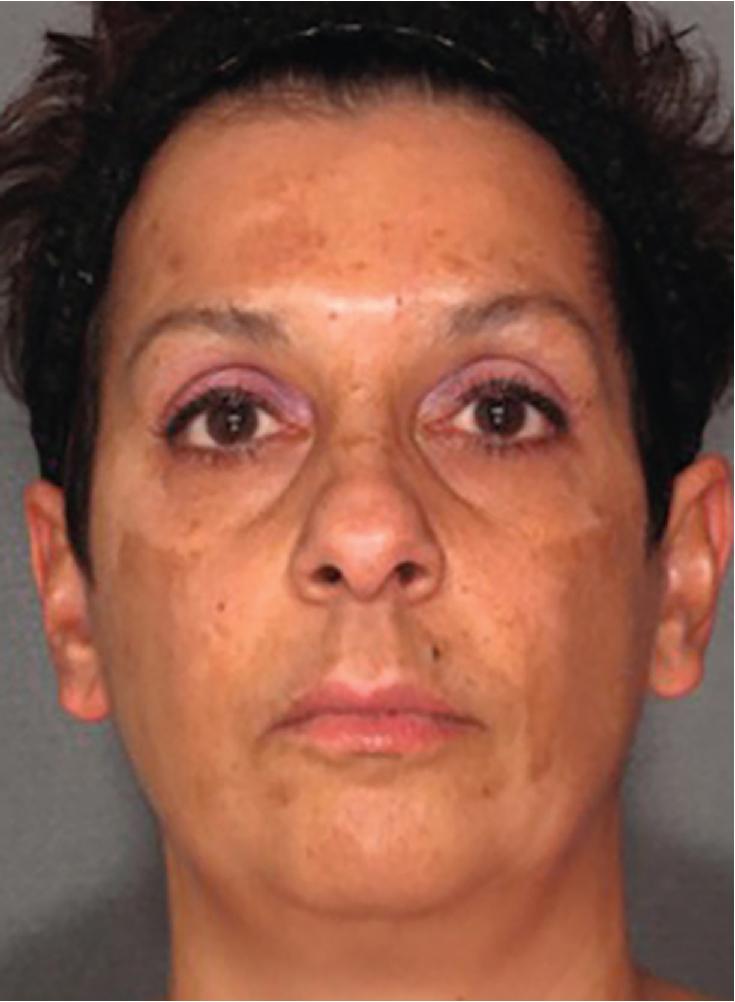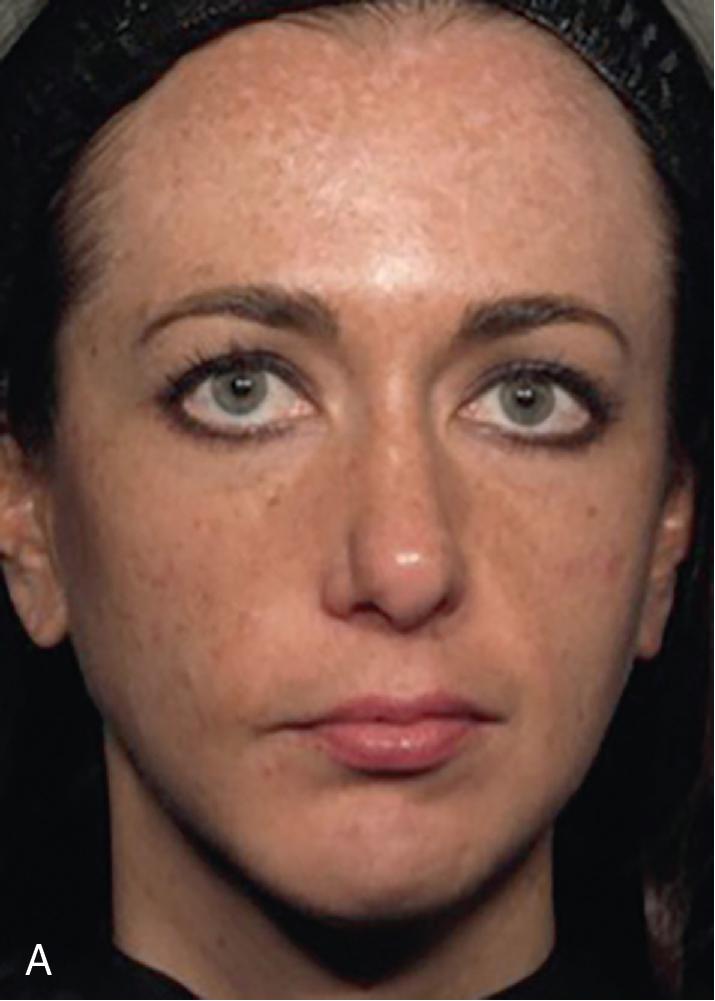Physical Address
304 North Cardinal St.
Dorchester Center, MA 02124
Skin resurfacing procedures have continued to increase in popularity as the worldwide trend in noninvasive to minimally invasive procedures increases. Chemical peels are a low-cost yet highly effective means by which skin resurfacing can be achieved. Peels are a great alternative to laser resurfacing for certain indications and a great adjunct to laser resurfacing in other instances. With the proper patient evaluation, skin preparation, and correct treatment plan, skin rejuvenation results can be remarkable.
Chemical peels are increasing in popularity as the trend toward noninvasive or minimally invasive procedures grows. The American Society of Plastic Surgery 2014 Survey data show that surgical cosmetic procedures since 2000 have decreased by 12%, and noninvasive outpatient cosmetic procedures have risen by 154%. The most common cutaneous concern in darker skinned patients is the issue of dyschromia. The ability to safely resurface, with peels or lasers, patients of a wide ethnic diversity hinges on the knowledge of skin anatomy, the depth of the issue they present with, and the proper performance of the procedure.
It is important to recognize that the skin undergoes aging both intrinsically (chronologic passage of time) and extrinsically (environmental damage). Intrinsic aging shows that with the chronologic passage of time, the epidermis and dermis atrophy and the turnover of skin cells slows down. Collagen, elastin, and glycosaminoglycan production declines steadily through the years starting from about the age of 18 years. Furthermore, the combined effect of tanning and cigarette smoking is more deleterious than either one alone.
Indications for chemical skin resurfacing include textural changes such as acne scars, enlarged pores, and wrinkles, to pigmentary concerns such as freckles/lentigines, and photodamage ( Table 2.1 and Fig. 2.1 ). In addition, peels have been used in the management of precancerous changes in the skin.
| Anatomic Skin Level | Clinical Presentation | Treatment Options |
|---|---|---|
| Epidermis |
|
|
| Dermis |
|
|
| Epidermis and dermis | Mixed-type melasma | Medium-depth resurfacing |
a Best treated with electrodessication (using an epilating noodle for dermal lesions).

As with any cosmetic surgery procedure, evaluation, preoperative consultation, and proper patient selection are crucial. Patients who seek treatment for barely noticeable skin anomalies are likely to be unhappy with postoperative results, even when the physician considers the outcome a success.
A thorough history and physical examination should focus on medications and illnesses that could impact wound healing ( Table 2.2 ). These would include medications such as prednisone, immunosuppressants, or D-penicillamine, along with conditions such as diabetes or scleroderma. Smoking or “vaping” (electronic nicotine use) or prior radiation treatment to the face and neck can also impair wound healing, as resurfaced skin requires intact and functioning pilosebaceous units and a good blood supply to reepithelialize correctly. Furthermore, tanning the skin and/or cigarette smoking will diminish the duration of any improvement that is achieved. See ![]() for lecture video content on Chemical Peels.
for lecture video content on Chemical Peels.
| Pertinent History | Relative Contraindications | Absolute Contraindications | |
|---|---|---|---|
| Medical |
|
|
|
| Social | Smoking history Chronic sun exposure | Smoking/vaping/nicotine use | Inability to follow instructions Unrealistic expectations |
Knowledge of skin anatomy is crucial for proper resurfacing.
Chemical peels can be tailored to various patient concerns.
Knowledge of the various peeling agents allows for proper selection of the peeling modality for each patient’s needs.
Proper performance of chemical peels allows patients of darker skin types to be safely treated.
The general health and nutritional status of the patient is also an important consideration for appropriate wound healing, especially in a time where the number of bariatric surgery patients is increasing. Often, post–bariatric surgery patients are deficient in vital nutrients or protein. The physician should inquire about previous poor wound healing, hypertrophic or keloid scars, or a tendency to develop postinflammatory hyperpigmentation (PIH). Seborrheic dermatitis, atopic dermatitis, and rosacea indicate the presence of inflammation in the skin, thus increasing the risk for postoperative complications secondary to alterations in the skin’s normal barrier function. Melasma is a very common dyschromia for which patients seek treatment ( Fig. 2.2 ). However, if the patient is taking estrogen or oral contraceptives, is using a hormone-containing intrauterine device, or is exposed to sun or heat during the recovery phase, they may be prone to a relapse of melasma or a temporary issue with PIH during the healing stages of the procedure.

Concurrent or recent (within the last 6 months) oral retinoid use has been generally considered an absolute contraindication to resurfacing because of reports of prolonged healing and hypertrophic scarring. A number of recent studies have brought into question the validity of this concern and challenge the conventional thinking that isotretinoin impairs wound healing with regard to skin resurfacing and laser treatments. Until clear-cut guidelines emerge, the author stops isotretinoin 3 to 4 months before resurfacing and does not restart it until 2 to 3 months postoperatively. If the patient develops an acne or rosacea flare, antiinflammatory antibiotics (doxycycline) can be used to quiet this down without impairing wound healing.
A similar question arises with regard to the safety of simultaneous skin resurfacing and cosmetic surgery. In the past, it was thought that combining these procedures increased the chance of impaired wound healing. Newer studies have reported safe outcomes combining fractionated laser resurfacing with short-flap rhytidectomy, full-face laser skin ablation combined with rhytidectomy, fractionated CO 2 laser has been used to complement and enhance the results of endoscopic eyebrow lifting and surgical blepharoplasty, and simultaneous facelift and laser resurfacing over skin flaps with decreased laser energy settings, and reduced number of passes, has achieved excellent aesthetic results.
While most patients can safely undergo skin resurfacing, absolute contraindications include pregnancy, active infection at the treatment site, significant tendency to develop keloid scars, and the inability to adhere to postoperative instructions.
Older skin classification systems such as Fitzpatrick skin type or Glogau skin type do not provide the physician all the information needed to select the best treatment modality. In particular, these scales were devised before the emergence of nonablative and fractionally ablative technologies and fall short in addressing patients with thicker skin or darker skin types. The author uses the Obagi Skin Classification ( Table 2.3 ) to help with proper procedure planning.
| Skin Variable | Skin Conditioning—Pre- and Postresurfacing | Suitable Procedures and Potential Complications |
|---|---|---|
| Color |
|
|
| Oiliness |
|
|
| Thickness |
|
|
| Laxity | Lax skin requires long-term collagen stimulation to prevent further laxity |
|
| Fragility | Goal is to maintain or possibly increase skin strength |
|
a If systemic isotretinoin is used, it is prudent to delay medium or deep skin resurfacing by at least 3 months (medium-depth resurfacing) to 6 months (deeper resurfacing).
Particular attention should be paid to the patient that has skin that freckles, develops melasma, or is prone to PIH. Regardless of ethnic background, the presence of these issues heralds the risk of postprocedure hyperpigmentation. These patients can be treated safely if the duration of both pre- and postresurfacing skin conditioning is extended to at least 8 to 12 weeks.
Proper skin conditioning should be started at least 6 weeks (8–12 weeks or longer for darker skinned individuals) before resurfacing. Typically, the patient will use this regimen up until the night before the procedure. Tretinoin 0.05% to 0.1% or retinaldehyde 0.1% cream promote collagen synthesis, enhance hydroquinone penetration, restore normal epidermal thickness and maturation, and improve solar elastosis. , Studies have shown faster wound healing from skin resurfacing in patients pretreated with tretinoin. Since many retinoids are photolabile, it is suggested that they be applied at night. Patients are instructed to apply 0.5 to 1 g of tretinoin or retinaldehyde to the entire face nightly, including the lower eyelids with feathering to the hairline, jawline, and preauricular areas. The corners of the eyes and mouth should be avoided. The upper eyelids should be treated one to two times per week. If there is significant retinoid dermatitis, the topical agents can be stopped 4 to 7 days before skin resurfacing.
Hydroquinone 4% cream reduces the risk of PIH. Since the half-life of hydroquinone is 12 hours, it requires a twice-daily application. Patients are instructed to apply 1 g twice daily to entire face, with a second light application to areas of darkest pigmentation (sun spots, melasma).
A topical polyhydroxy acid/lactobionic acid or alpha-hydroxy acid 6% to 8% can be applied in the mornings to help minimize acne flares and to enhance the penetration of hydroquinone or tretinoin. These are especially important for patients with thick or oily skin. However, these agents can oxidize tretinoin; thus it is not recommended to apply them in the evenings along with the retinoids. Photoprotection with sunscreens is important to protect the skin against deleterious effects of ultraviolet radiation. In addition, there is new interest in the effects of visible light on the aging process. Therefore, we may see an evolution in sun protection to be effective in the visible light spectrum.
Sunscreens have been divided into chemical absorbers (organic) and physical blockers (inorganic) on the basis of their mechanism of action. In the author’s practice, physical sunscreens are the only recommended type of photoprotection. These contain zinc oxide and titanium dioxide, which are chemically inert and therefore less irritating and less allergenic.
Newer, micronized zinc or titanium formulations have improved the elegance of sunscreen products and may virtually replace moisturizers for patients.
The use of proper skin conditioning before a procedure helps reduce the risk of hyperpigmentation afterwards. Furthermore, the improved skin texture motivates patients to proceed with further procedures to enhance their skin ( Fig. 2.3 A, B). Lastly, the ability of a patient to adhere to a skin care regimen helps to predict which patients are most likely to be compliant with postoperative instructions.

All patients should receive prophylaxis against herpes simplex virus (HSV) or varicella zoster virus (VZV) to prevent reactivation and potential scarring regardless of their personal history of previous viral infection. Valacyclovir is the author’s preferred medication; the usual dose is 500 mg twice daily, starting the day before surgery and continuing until the skin has fully healed (7 days for chemical peel resurfacing and 15 days for laser resurfacing). If a patient has a significant history of HSV or VZV, a dose of valacyclovir 1 g twice daily is used. This dose can be increased to three times a day if needed to control an outbreak. Antibiotics and anti- Candida agents are reserved for use only when an infection develops. However, topical mupirocin ointment is prescribed to patients to apply to the nares three times a day starting 1 week before their skin resurfacing and continuing until their skin is fully healed.
This chapter will categorize peels according to their depth of penetration into the skin rather than strictly referring to the acid used ( Table 2.4 ). Exfoliation will refer to wounds confined to the epidermis (basal layer and above). Peels reaching the papillary dermis but not entering the reticular dermis will be classified as light, while medium-depth peels will refer to peels that have entered the superficial aspect of the reticular dermis. Deep peels extend into the mid-reticular dermis. It is imperative to monitor the intraoperative signs to assess the depth of penetration. This will be discussed further.
| Acid Properties | Commonly Used Concentrations and Formulations |
|---|---|
| Keratolytics |
|
| Protein denaturants |
|
a Phenol at concentrations below 50% has keratolytic properties
There are a few key factors to be aware of with regard to skin–acid interaction and penetration. These are the type of acid used, the concentration of the acid, the force by which the acid is rubbed into the skin, the volume of acid applied to the skin, whether or not the skin is preconditioned properly to enhance penetration, and in some cases, the duration of contact of the acid on the skin ( Table 2.5 ). Selection of peeling agents should be based on the mechanism of action of the solution and not on acid concentration. Chemical peeling agents are classified as keratolytics or protein denaturants. Keratolytics are primarily used for superficial, exfoliative procedures, whereas the protein denaturants can be used for superficial or deeper peels. As will be discussed later, keratolytics can be used in combination with protein denaturants to enhance peel penetration.
| Enhanced Penetration of Peel Solution Into the Skin | |
|---|---|
| Acid properties |
|
| Skin properties |
|
a Caution is required when combining pools with dermabrasion and laser resurfacing. The pool should be performed first, the acid then washed off, then the laser or dermabrasion is performed.
Keratolytics act as exfoliating agents based on their ability to disrupt adhesions between keratinocytes. Glycolic acid, salicylic acid, and Jessner’s solution are the most commonly used keratolytic peeling solutions. Jessner’s solution is comprised of 14% each of resorcinol, salicylic acid, and lactic acid mixed in ethanol. These agents are primarily used for superficial conditions such as roughness, acne, and mild dyspigmentation.
Salicylic acid and Jessner’s solution have an advantage over glycolic acid in that salicylic acid is lipophilic. Therefore, these two peel solutions penetrate acne lesions or oily skin better than a hydrophilic agent such as glycolic acid. Another advantage they have over glycolic acid is that salicylic acid and Jessner’s solution do not have to have the skin contact time closely timed.
All three of these peels have the benefit of little to no “downtime,” no anesthesia requirement, and they are easy to perform. Because of the superficial nature of these peels, results are seen only after a series of peels, spaced several weeks apart. However, because of the superficial nature of these peels, deeper issues such as wrinkles, acne scars, or dermal melasma will not improve with these, regardless of how many peels are performed.
Become a Clinical Tree membership for Full access and enjoy Unlimited articles
If you are a member. Log in here